
The spread of invasive lionfish through the Caribbean has been well-documented, but a similar invasion in the Mediterranean has not. The Underwater Photography Guide’s Editor-in-Chief, Nirupam Nigam, visited the region to find out more
By Nirupam Nigam
The Mediterranean Sea has been a popular tourist destination for decades, with a rich history and striking landscapes drawing visitors from around the world. More than just a postcard-worthy backdrop for a holiday, the Mediterranean has been at the centre of civilization for millennia as a vital trade route and provider of sustenance to its many nearby inhabitants.
Bordered by Europe, Africa, and the Middle East, evidence of the trade and conflict is underwater; lost cities, fascinating shipwrecks and the consequences of two World Wars draw scuba divers to destinations including Malta, Turkey, Cyprus, Croatia, and more.
Related articles:
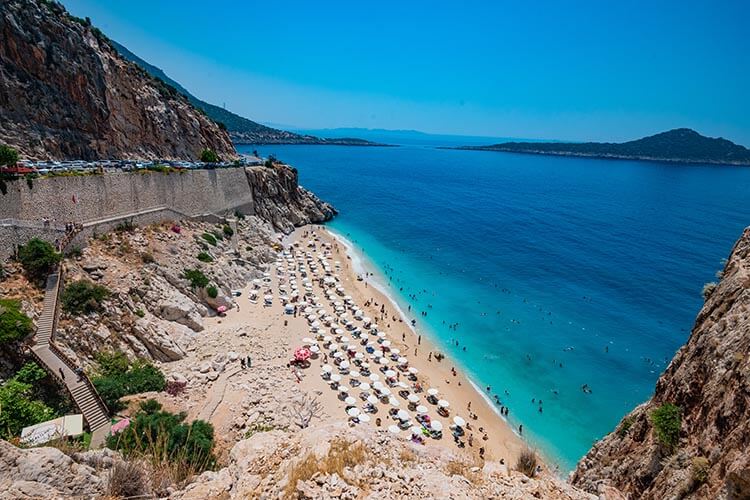
Historical connections
Human activity has a lasting impact on our planet, as evidenced by the evolution of the Mediterranean Sea and its inhabitants. When the Suez Canal was completed in 1869, the Mediterranean opened to the rest of the world, enabling a more efficient trade flow into and out of Europe.
While these changes had a visible impact topside, they also affected the underwater world, with a number of marine species following the ships as they travelled between the established ecosystems of the Red Sea and the Mediterranean.
The warmer waters, higher salinity and overall climate of the Red Sea provide a robust environment for a diverse array of marine species to thrive. As the Red Sea is elevated in height over the Mediterranean, the opening of the Canal created a constant flow of water from the Red Sea into the Mediterranean, bringing with it more than 300 species that have been so far identified – and perhaps more than 1000 in total – over the subsequent decades, in what has become known as the Lessepsian Migration.
In recent years, the most notable of these is the infamous lionfish.
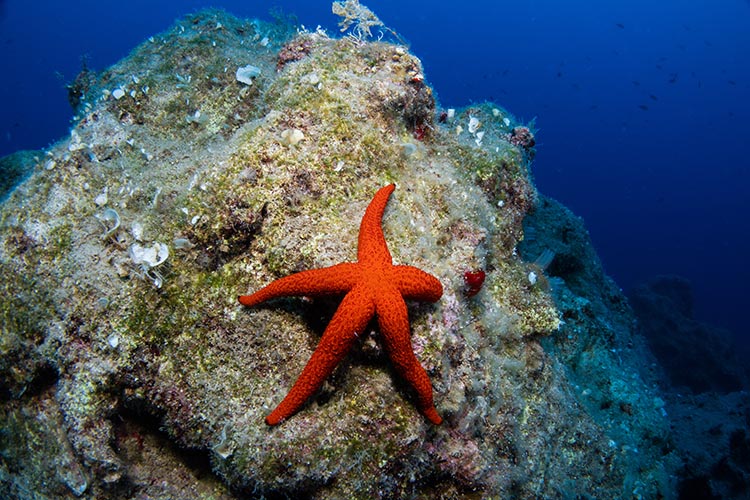
A beautiful invasive species
Most divers will be familiar with the striking beauty of the lionfish, decorated with feather-like spines renowned for their painful poison. The fish are endemic to the Indo-Pacific and Red Sea, and are routinely spotted when diving or snorkeling in these regions.
When lionfish were accidentally introduced to the Western Atlantic and Caribbean, the rapidly reproducing venomous fish quickly became the region’s most invasive species. Female lionfish spawn every four days, producing 2 million eggs per year, and with no natural predators, the Lionfish population explosion now threatens the entire regional ecosystem by feeding on smaller, juvenile reef fish.
The Lionfish invasion has been so detrimental in the Caribbean that it has inspired lionfish hunting scuba diving courses and competitions.
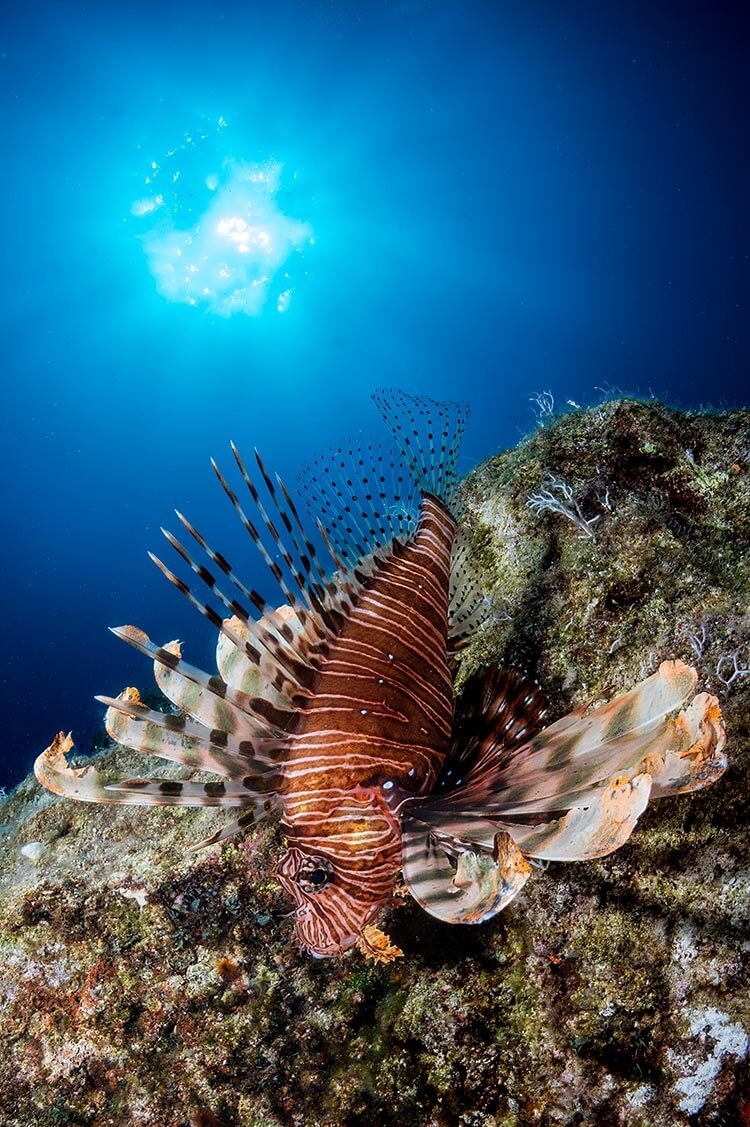
Although the Lessepian Migration began with the completion of the Suez Canal, Lionfish have only recently become a problem in the Mediterranean. A single specimen was recorded in 1991, but no further sightings were reported until 2012, when two specimens were captured along the coast of Lebanon. Since then, sightings have risen rapidly.
The expansion of the Suez Canal during 2014-2016 is thought to have been partially responsible for a further increase in the population, which has since expanded from Cyprus and the eastern border of the Mediterranean towards Greece and Libya, and more recently as far north and west as Italy, Croatia and Tunisia.
It is thought that the projected warming of the Mediterranean Sea will increase the spread of the invasion, but the common lionfish (Pterois miles) is capable of surviving within a range of temperatures typical of a large expanse of the southern Mediterranean.
The European Commission raised the alarm about lionfish in 2015, resulting in efforts to learn from scientists involved in lionfish removal in the Western Atlantic. With few reports about the lionfish invasion in the public sphere, however, I decided to visit the region to find out first-hand how substantial the problem is.
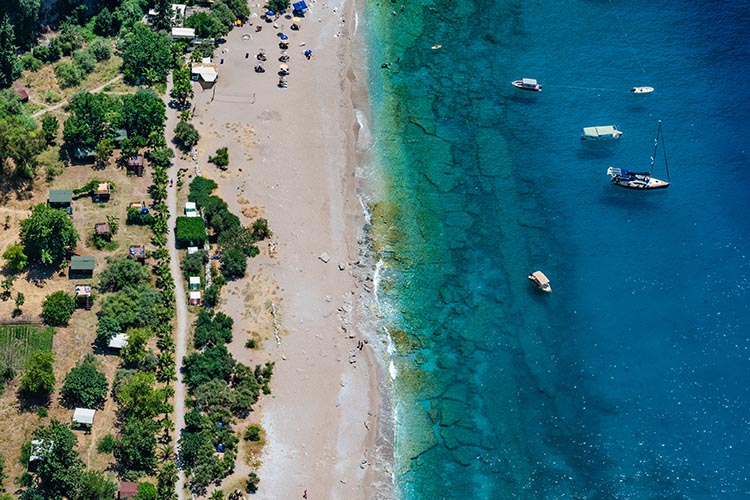
A diver’s startling discovery
In the summer of 2022, I travelled to the Turkish Riviera to dive the popular Lycian coast. The small town of Kas is the major hub for scuba diving in Turkey, but centuries of overfishing in the Mediterranean have led to a severe depletion of fish stocks, and my first dive featured the dramatic, but mostly lifeless, topography. Indeed, the only place I have seen fewer fish was in the Gulf of Maine.
As I continued to descend, however, I noticed small, dark, basketball-sized shadows emerging from the depths. I approached them as they hovered in the blue; recognising the familiar spines and striations of lionfish – and was shocked to see their numbers in the dozens.
The fish turned and flared their spines in warning; some curiously approached their reflections in the dome of my underwater camera.
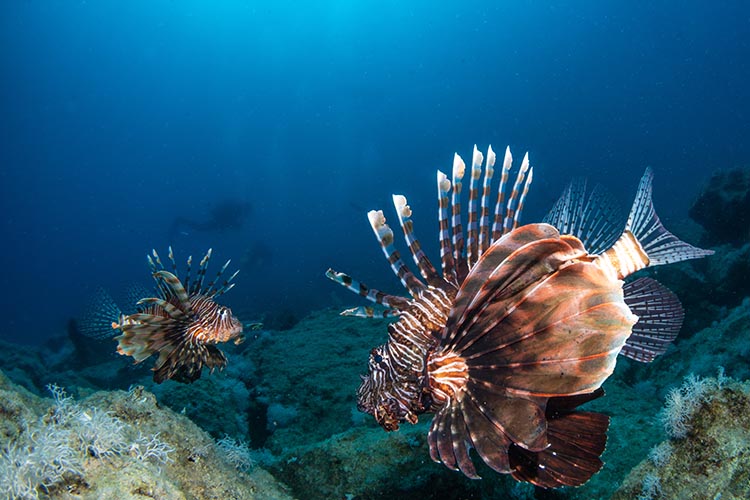
As we continued our dive, I realised there were lionfish everywhere; it was a dramatically different situation from the invasion in the Caribbean – lionfish appeared to be the primary marine species in the waters around Kas. Rather than an invasion, this was more like a replacement.
Mediterranean lionfish invasion – just the beginning
Divers bear witness to the constantly changing and adapting ecosystems in our oceans and can have a significant impact by documenting and sharing their stories with others.
Although I only made a few dives in a small region of the Mediterranean, even anecdotal evidence of a profound lionfish invasion is enough to consider its ramifications.
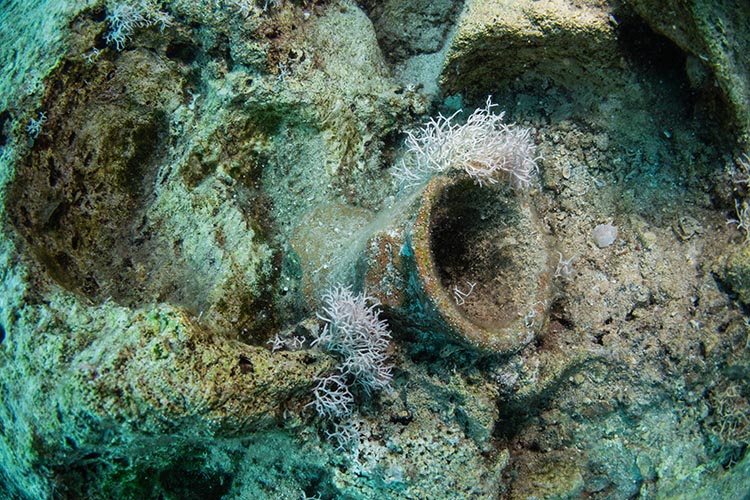
How can we help reset the scales and right this imbalance in the Mediterranean Sea? Scuba divers and free divers can help to create programs to cull and eat lionfish, as they have done in the Caribbean. The authorities need to establish fisheries to capture Mediterranean lionfish, which will provide an excellent source of income, industry and protein to the region.
It will be complicated, however – if not impossible – for humans to effectively intervene in, or reverse, the ongoing invasion through the Suez Canal. Time will tell how the lionfish invasion will affect the Mediterranean Sea. As Jurassic Park’s Dr Ian Malcolm would say: ‘Life finds a way.’
For further reading, and for travel tips and bookings to Turkey and Malta and many other fantastic worldwide diving destinations, check out Bluewater Dive Travel for more.
Nirupam Nigam is an underwater photographer and fisheries scientist and Editor-in-Chief of the Underwater Photography Guide and the President of Bluewater Photo. Check out Nirupam’s photography at www.photosfromthesea.com,


